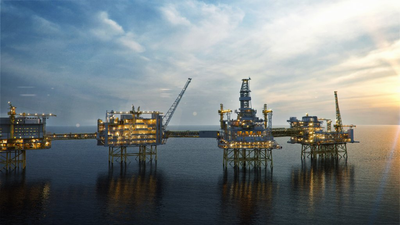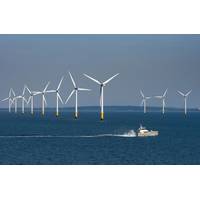Equinor Looks to Cut More Costs at Giant North Sea Oilfield
Norway's Equinor sees scope to further reduce development costs at the Johan Sverdrup oilfield in the North Sea, as it looks to maximize the potential of what could be the last giant field to be found off the Nordic country.
The field, one of the five largest oil finds offshore Norway, is estimated to contain up to 3.1 billion barrels of oil equivalents, mainly crude oil, enough to meet Britain's oil demand for five years.
Sverdrup is on track to begin production in late 2019 and could produce up to a quarter of Norway's overall petroleum output at its peak.
Equinor, formerly Statoil (STO), has already cut development costs by 35 billion crowns ($4.1 billion) to 88 billion crowns, thanks to more efficient drilling and smooth execution that meant cash put aside for contingencies has not been used.
"I think there are still some further gains on the cost side," Margareth Oevrum, Equinor's executive president for technology, project and drilling, told Reuters.
Oevrum was speaking at the Sverdrup drilling platform, one of two already in place in the North Sea, some 160 km (100 miles) west of the Norwegian coast.
Workers were connecting pipes, laying cables and testing equipment in heavy wind and rain, part of the 800 staff currently offshore to complete construction.
The remaining two platforms are expected to be delivered to the field in spring 2019.
During the first stage of development, Sverdrup is expected to produce up to 440,000 barrels of oil equivalents per day (boepd), while the second phase, scheduled to start in 2022, is expected to boost output to 660,000 boepd.
State-controlled Equinor is expected to submit a plan for the field's second phase, estimated to cost a preliminary 45 billion crowns, later this month.
"Going forward this will be the biggest oilfield producing on the Norwegian continental shelf," said Oevrum.
Sverdrup's significance in terms of oil output could be even higher.
Oil pricing agency S&P Global Platts has said output from the field would be suitable for its North Sea basket, making it potentially a sixth crude underpinning the Brent benchmark , used to price most global oil.
The field also helped sustain demand for industry suppliers during the 2015 oil downturn, with Equinor and partners Lundin Petroleum, Aker BP, Petoro and Total awarding contracts worth over 60 billion crowns.
"I lost my job when the (oil) crisis came, and I got it back, when this project started, so I am very happy," said Stian Simonsen, 30, a pipe fitter working at Sverdrup. The field is named after a 19th century Norwegian prime minister.
But there may not be another Sverdrup to help the Norwegian oil industry in the years ahead.
"I can't see anything larger for the future ... We have Johan Castberg, but it's not as big as Johan Sverdrup," Oevrum said, referring to Equinor's oilfield development in the Arctic.
"We are still positive about exploration and will explore more, but at the moment we don't have anything."
Oevrum herself will soon leave Norway for Brazil to supervise the development of the Equinor-operated Carcara discovery, which is of a similar size to Sverdrup.
While Norway still accounts for about two-thirds of Equinor's total petroleum output, its international operations have been hitting new quarterly records.
"The Norwegian continental shelf has been the backbone of Equinor for many years, and it will continue for some time, but it will be gradually replaced by the international production," Oevrum said.
By Nerijus Adomaitis












